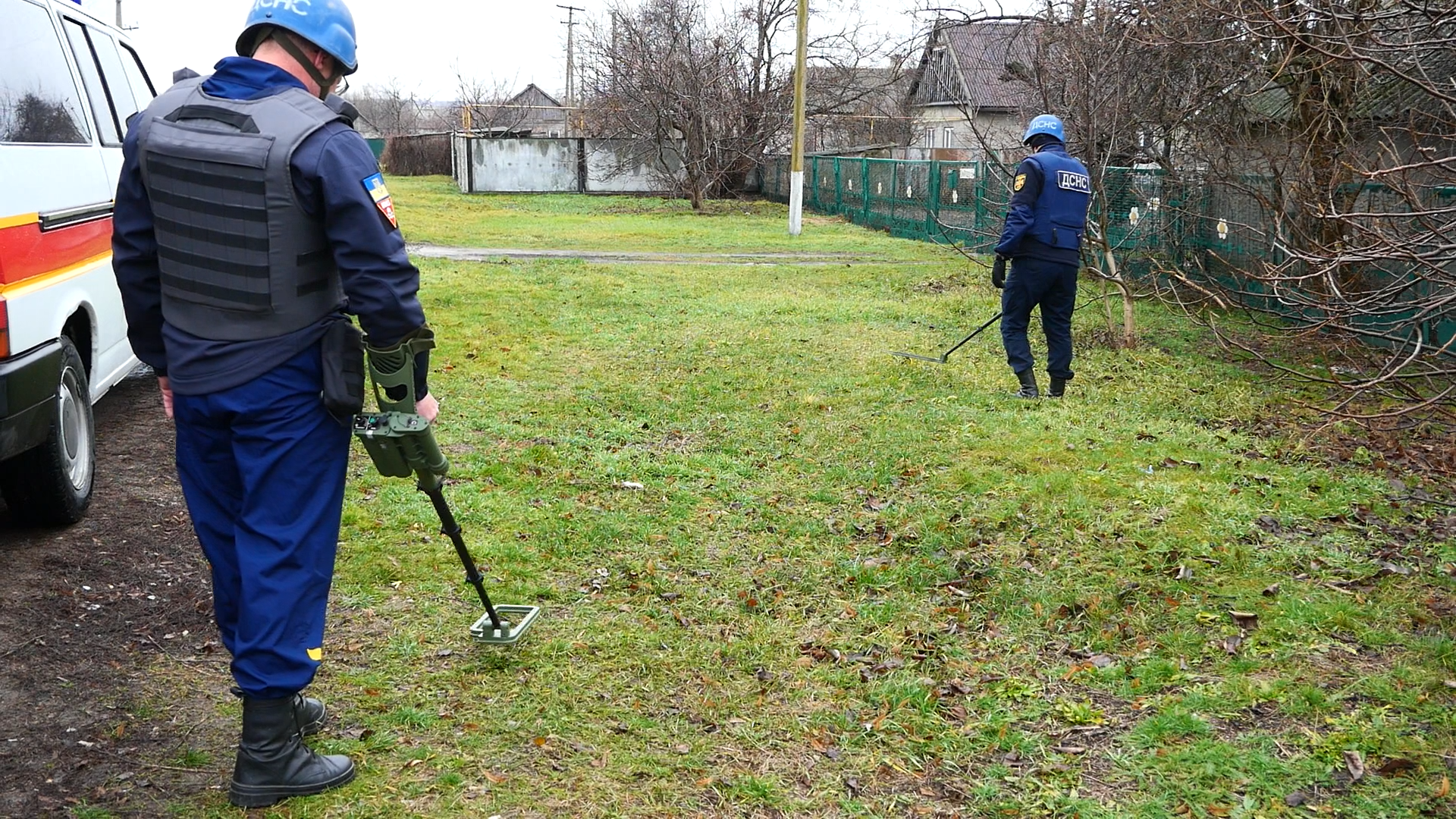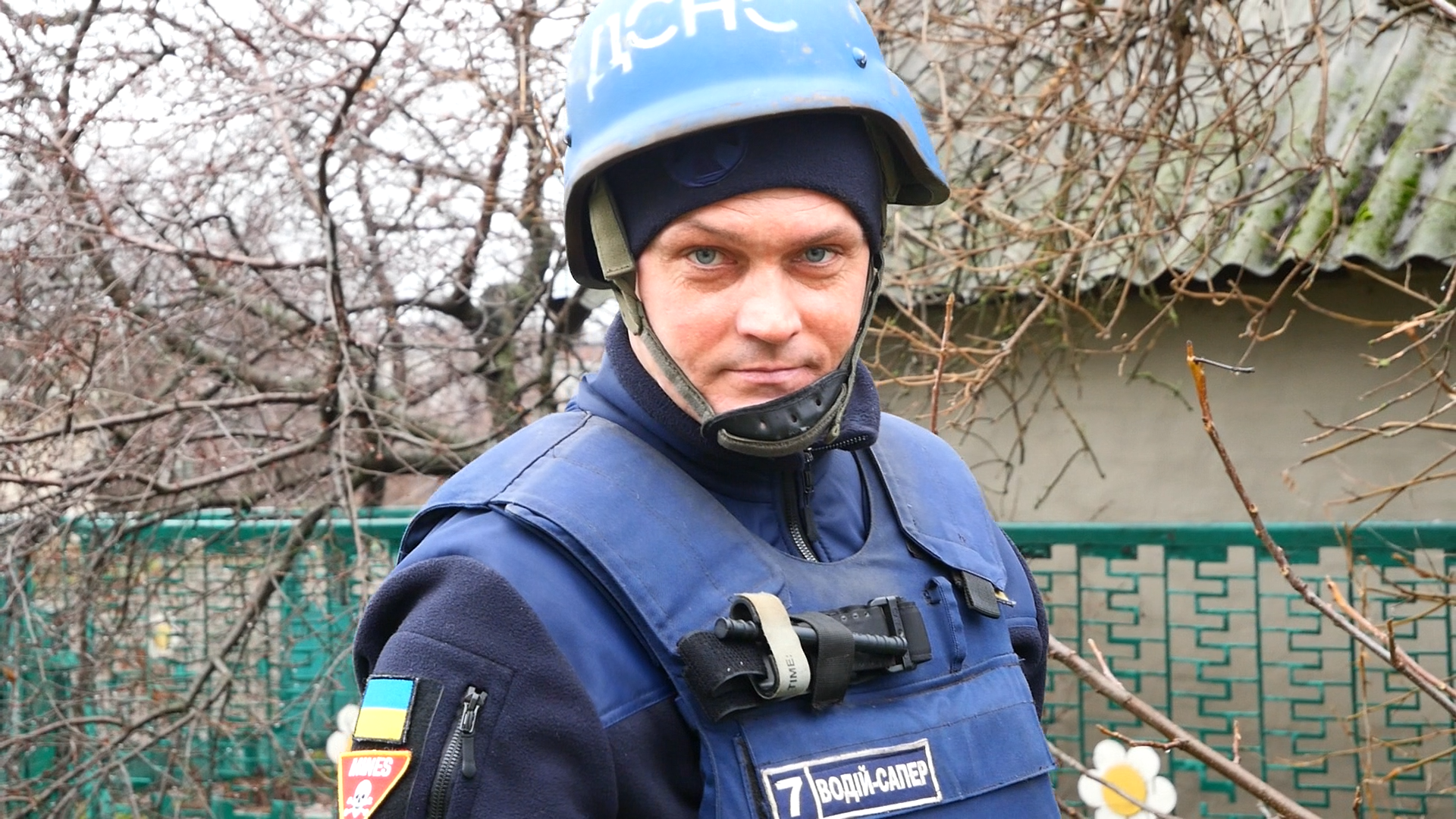
What is the problem?
"Glory to Ukraine's Armed Forces" has become a phrase familiar to everyone in Ukraine, and it is often used together with "Glory to Ukraine." But some heroes, whom we rely on and trust with our lives too, remain on the sidelines of our attention.
Today, Rubryka does justice to these people and opens the curtain hiding rescuers' great work. We learned how the sappers of Ukraine's State Emergency Service work during demining, what rescuers need to dismantle the rubble of buildings struck by russian missiles, and how long it will take to demine forests. We also explain what you should do when you find yourself under the rubble and how rescuers operated when an entire section of the residential building collapsed in Zaporizhzhia.
What is the solution?
Behind the scenes of rescuers' work
Oleksandr Vinnytskyi, Chief of the Pyrotechnic and Emergency Rescue Department of the Special Emergency Rescue Squad at the Zaporizhzhia region branch of Ukraine's State Emergency Service of Ukraine, lieutenant colonel of the civil defense service, says that demining in his department does not stop:
"Deminers with metal detectors constantly work because there are a lot of mined areas. They (metal detectors, — ed.) are often used in the Kherson region's de-occupied territories. Just yesterday, three of our crews came back from rotation. One more crew is still there."

It's not surprising that the crew from the Zaporizhzhia region was sent to Kherson. In the same way, rescuers from Khmelnytskyi are now working almost all over Ukraine. Serhii Kosar, the deputy chief of the pyrotechnic works group of Ukraine's State Emergency Service in the Khmelnytskyi region, told Rubryka:
"Our group consists of 48 people, and all of them work in the liberated territories where hostilities took place. Thus, in 2022, the group performed tasks in Kyiv, Kharkiv, Chernihiv, Kherson, and Donetsk regions."
During the year of the full-scale war, the pyrotechnic works group in Khmelnytskyi expanded almost twice — from 25 to nearly half a hundred people. Of course, there was insufficient equipment because every deminer should have a metal detector. So Ukraine Rapid Response Fund (URRF) joined the procurement. With the help of the fund, the State Emergency Service received metal detectors. It gradually increased the number of sappers and, with it, the speed of demining the territories.
How do new metal detectors work?
Metal detectors used by emergency service members are very sensitive. They detect ferromagnetic objects, the smallest fragments, and even springs.
Reference. Ferromagnetic objects can acquire the properties of a magnet to be magnetized under the influence of weak magnetic fields. These are nickel, iron, cobalt, chromium, manganese, gadolinium, and their alloys. Some of these metals are heavy (chromium, nickel, cobalt), and their compounds can be toxic, so removing ferromagnetic objects is imperative to prevent future damage from these metals.

Metal detectors are categorized by the distance on which dangerous objects can be recorded: up to 60 centimeters, up to 3 meters, and up to 6 meters. Those that the State Emergency Service received from URRF belong to the first category of up to 60 centimeters.
"But everything depends on the type of explosive object underground. If it is an anti-personnel mine or a plastic anti-tank mine with a plastic detonator, the search depth will be up to 10 centimeters. If it is an unexploded ordnance, the search depth will be up to 50–60 centimeters, and maybe even more," Serhii Kosar, a member of the State Emergency Service, tells us.
Every centimeter of land must be checked with metal detector during demining
"I personally used such a metal detector in the Khmelnytskyi region during continuous demining," Serhii Kosar shares his new experience using metal detectors from URRF.
Continuous demining is when every centimeter of land must be checked with a metal detector, and all ferromagnetic objects are removed. This means thoroughly cleansing the earth of explosive objects and ferromagnetic objects. Small search-depth metal detectors are used for a thorough inspection of the area.

But metal detectors are not everything. For work, sappers also use fillers to detect tripwires. This is a "sword" made of a thin wire, which will immediately bend when it hits the tripwire. Sometimes tripwires are detected by visual inspection, but if the rescuer does not see it, the filler will draw attention to the danger.
Demining 5 hectares of forest can take a month of work
The demining process in some areas is more complicated, dangerous, and longer. First, this concerns demining of forests and fields.
"If we have a confirmed dangerous area, for example, a forest where military operations were conducted, where there may be mine-explosive barriers, then one pyrotechnic unit can demine 5 or 6 hectares in a month. But several units may be involved," explains Serhii Kosar.

Today, 2.9 million hectares of forests were touched by hostilities in Ukraine, President Zelensky stated during his speech at the UN. This area is equal to half the size of Switzerland, and all these areas can be considered conditionally dangerous. These areas must be first checked to transfer them to the class of "confirmed dangerous" (a mandatory status for demining). How much time it will take is a conditional and approximate number, but it is no less terrifying.
According to our calculations, if all 2.9 million hectares are confirmed as dangerous, it will take 48 years to clear the forests in Ukraine. But we still hope that it will happen sooner.
Sometimes you need to cut grass with hand pruners to demine
Serhii Kosar told Rubryka that the time for demining is an arbitrary indicator because each specific case may have its complicating conditions.
Pollution, and natural obstacles, such as tall grass, delay sappers: "The grass makes the process very difficult because all this is done very carefully, on the knees, with the help of manual secateurs. Everything is carefully removed so that a layer of the earth remains, and only after that can full demining be carried out," the deminer explains.
How do sappers protect themselves during work?
Protective gear for sappers is mandatory. These are protective helmets and body armor, ballistic goggles, knee pads with elbow pads, protective gloves, and special hard-toed shoes.
Special tactical suits protect the whole body for heavy and super-heavy jobs (those related to the destruction of dangerous and extremely dangerous explosive objects).

Forests in Ukraine will be demined last. And what is the first?
It was also interesting to find out in which order various objects in de-occupied settlements are demined. In previous articles, we discussed the dangers of visiting the forests because they will be demined last, and we learned that this is a slow process.
Oleksandr Vinnytskyi, the chief of the pyrotechnic and emergency rescue work department from Zaporizhzhia, explained which objects in populated areas are prioritized for demining:
"Usually, the order of demining territories depends on the tasks set by local authorities, but first of all, these are power lines to restart the energy industry work and provide electricity to the settlements. Then there are other infrastructure facilities, for example, pumping stations."
Houses, yards, and roads can be demined later. That is why it is essential to listen to the State Emergency Service's recommendations and return to the de-occupied territories only after it is safe to do so. Vinnytskyi explains how this system works:
"As a rule, the work is carried out in parallel, and if there is already access to populated areas, the groups carry out demining of roads and residential buildings at the same time," the critical thing is to have enough metal detectors because the more rescuers are involved, the faster the area will become safe.
How do State Emergency Service rescuers dismantle rubble of buildings after shelling?
Find. Unblock. Evacuate. Help.
On Wednesday, January 19, the russians once again set a new terrifying anti-record: more than 200 strikes were recorded in the city of Zaporizhzhia. Once again, the infrastructure and residential buildings were destroyed. The following day we contacted Dmytro Fedotov, the chief of emergency and rescue operations in Zaporizhzhia, to ask him how people are rescued from the rubble.

The main task of rescuers at the place of the strike is to find and save people, unblock them from under the rubble, and evacuate them to a safe place.
To do this, the rescuers go through the rubble in rows with an interval of several meters and listen (which is why, if you find yourself under the ruins, you need to call out loud for help). Pipes are being tapped on (to "reach" those who are inaudible because pipes of any kind transmit sound very well). The rescuers look into cracks and holes and sometimes even use geophones.
Dogs are also involved in the search for people.
From scrap to crane — what equipment do emergency responders need?
To complete the second part of the task — unblocking victims — rescuers become architects for a while. They need to disassemble the wreckage and create so-called "embrasures" and "galleries," where it is necessary to punch holes.

It is not an easy task involving people and various equipment — from scrap to the crane. Gasoline cut-off machines are among the necessary tools — the emergency responders received them from the URRF:
"When a concrete slab of a block building falls and collapses in half, it cannot be safely lifted because there is a frame made of rebar inside," the chief of emergency and rescue operations explains. "It must be cut, and only after that, the slab can be pulled out with a crane or a forklift. It's the same with brick buildings," Dmytro Fedotov continues. "Pipelines, sewage pipes — all this interferes with the removal of rubble, so we cut it into more or less small parts with cut-off machines and clear it, manually or with a loader."

Firefighters sometimes use cut-off machines. The photo shows the work of rescuers during a fire at a sawmill in Sumy.

How people were rescued in Zaporizhzhia
Over the past couple of years, several new vehicles for rescue teams have appeared in Zaporizhzhia: "There were vehicles, but not all of them were equipped. For example, there are cars and fire escape ladders, but there is no technical equipment. Therefore, we equip with what we have in stock and what other organizations provide."
Dmytro Fedotov gives an example of how rescuers now work with cut-off machines. He recalls an explosion on Zaporizhzhia's Sobornyi Avenue in October. Then a russian rocket hit a residential building and destroyed an entire section of the building.

"One of these vehicles was going to 151 Sobornyi Avenue. The section collapsed, and the car was lifting us onto the roof. The remains of this roof hung on the water pipes. And so, we climbed onto the roof, cut the pipes with cut-off machines, the remains of the roof fell, and only then was it more or less safe for our people to dismantle the rubble further," Fedotov routinely talks about things that are a disaster for ordinary people. Still, for him, it's daily work.

The need in this job is to be brave, and the main goal is to save lives and make the world a safer place. Glory to Ukraine's Armed Forces and Glory to Ukraine's State Emergency Service!
In total, the IREX Ukraine Rapid Response Fund, with the support of the US State Department, provided Ukraine's emergency response departments in 13 regions with 117 metal detectors (including underwater equipment), 200 gasoline cut-off machines, and 360 units of additional equipment.
This article was created by the Rubryka online publication within the Ukraine Rapid Response Fund program, implemented by IREX with the support of the US State Department. The content is the sole responsibility of the Rubryka online publication and does not necessarily reflect the views of IREX or the US State Department.








